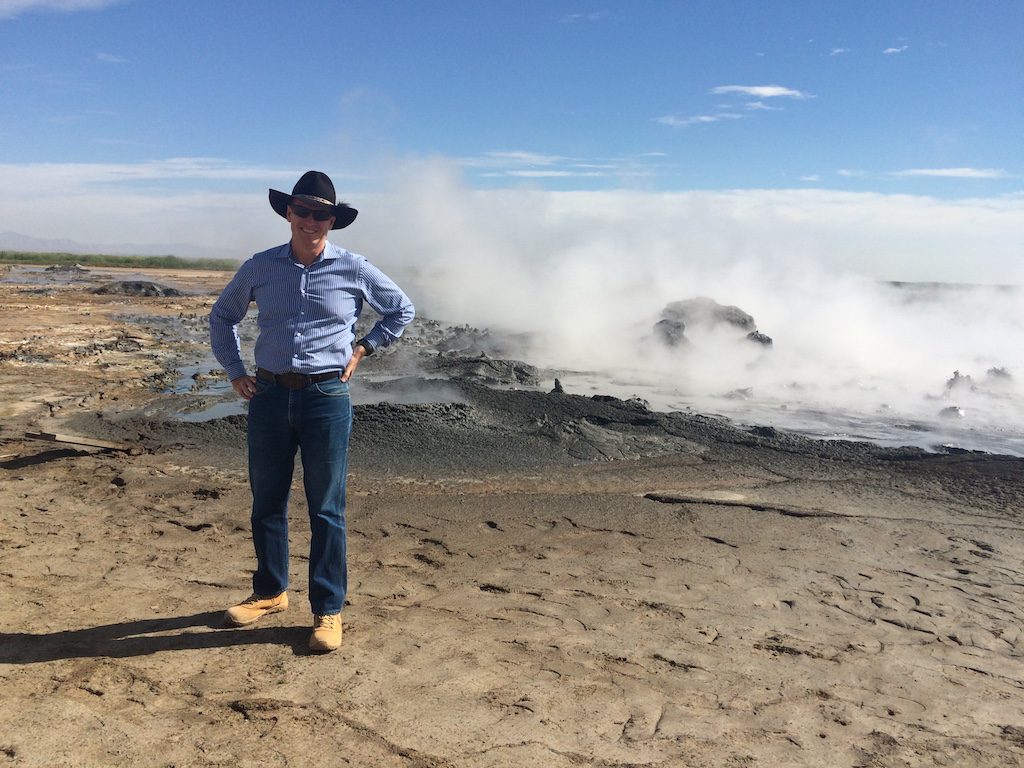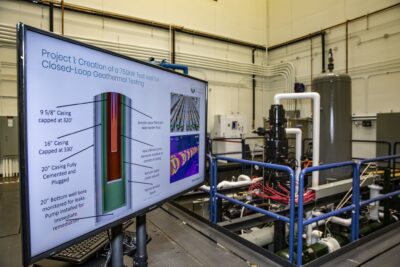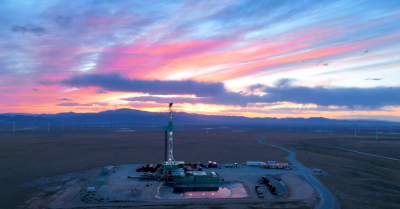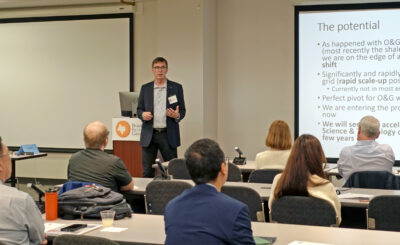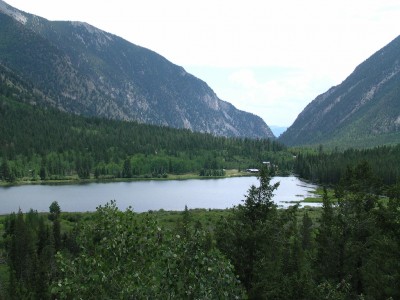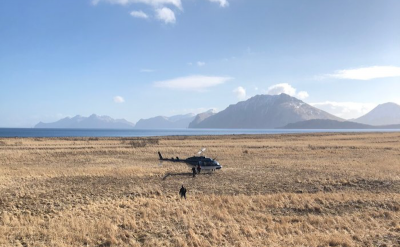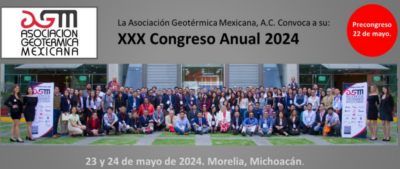CTR and Lilac Solutions to unlock massive sustainable lithium resource in the U.S.
Controlled Thermal Resources (CTR) and Lilac Solutions team up on the extraction of lithium from one of the world’s largest known geothermal resources at the Salton Sea in Imperial Valley, California.
Controlled Thermal Resources (CTR) and technology partner Lilac Solutions (Lilac), have joined forces to extract lithium from one of the world’s largest known geothermal resources at the Salton Sea in Imperial Valley, California, according to a release by the companies today.
Both firms are developing a lithium extraction pilot facility deploying Lilac’s proprietary ion exchange technology which recently received a $20 million funding, led by Bill Gates’ Breakthrough Energy Ventures; a $1 billion fund backed by global business leaders including Jeff Bezos, Jack Ma and Michael Bloomberg.
“This significant investment in Lilac’s technology creates further confidence in the sector and will greatly assist the scale-up of sustainable lithium projects in the United States,” Rod Colwell, CEO of Controlled Thermal Resources said. “It’s a real turning point for the U.S. lithium industry. Lilac’s extraction technology combined with CTR’s geothermal brine resource will deliver a consistent and secure supply of battery-grade lithium products with the highest sustainability credentials.”
Lilac’s founder and CEO Dave Snydacker said the company has conducted numerous large-scale tests on brine samples from around the world and received independent verification on the performance of the technology, which is significantly cleaner, faster, cheaper, and more scalable than existing mining technology.
“Lilac has taken a fundamentally different approach to extraction of lithium from Salton Sea geothermal brine using unique ion exchange beads developed by our team in Oakland in contrast to prior work by others to adapt conventional aluminium-based absorbents which have not performed well in this application,” Dave said. “Our technology offers exceptionally high lithium recovery and lithium selectivity, enabling low cost production, and we have proven these results with thousands of hours of test work on the Salton Sea geothermal brine chemistry. Controlled Thermal Resources is in an excellent position to deliver domestic supplies of lithium here in California with a world-class technical team and third-party oversight by HATCH.”
A solution to high environmental impact lithium mining
As the world rapidly transitions to electric vehicles and lithium demand is projected to grow four-fold over the next decade, the lithium industry’s mining and conversion methods are coming under greater scrutiny. “The media recently zeroed-in on the lithium industry, highlighting concerns around the environmental impacts of hard rock mining, evaporation pond conversions, and off-shore processing in China,” Rod noted. “While I believe demand for lithium will require supply from many resources by 2023, direct lithium extraction from geothermal brines will set the benchmark to combat these environmental issues. The auto sector is well-aware of these concerns and is already looking to secure the cleanest sources of lithium products for their supply chains.”
In contrast to current mining methods, direct lithium extraction from geothermal brines is a closed-loop system that returns spent brine to its original source; utilizes 100% renewable power and steam for processing; takes hours, not months to produce high purity lithium products; has a very small physical footprint and a close-to-zero carbon footprint; is not weather dependent or water intensive; doesn’t require open pit mines, large evaporation ponds or off-shore processing and; will run 24 hours a day, 7 days a week.
“This is the beginning of a new era for lithium production,” Rod added. “The lithium industry needs to be aligned and committed to a genuinely sustainable, low carbon emission future.”
A solution to critically low U.S. lithium supplies
According to Benchmark Mineral Intelligence, the United States currently produces 1% of the world’s raw lithium materials and just 7% of its lithium chemicals while China, Japan and South Korea produce 85% of the lithium chemicals required to power electric vehicles.
The U.S federal government has acknowledged the need to develop a strategy around its critical mineral security and has engaged in discussions with the sector. At a state level, California Energy Commission Chair David Hochschild is actively involved in supporting Imperial Valley’s evolving lithium industry.
“California has the potential to be the leading supplier of lithium in the world, driven by efforts from companies like Lilac and Controlled Thermal Resources,” Chair Hochschild said. “The CEC is proud of the investments we’re making in the future of lithium development in California.”
Speeding up the chemical specification and selection process.
Lilac’s current pilot plant and facilities in Oakland, California may solve yet another critical bottleneck affecting the smooth transition to an electric vehicle future. Currently, it can take years for lithium brine developers to construct new facilities and then process raw brine into high-quality lithium chemicals for off-takers in the battery industry. This is caused by long construction times for large ponds, very slow brine processing, vulnerability to weather conditions, and poor-quality raw materials affected by impurities.
“With CTR unlocking their large brine resource here in California, Lilac can produce lithium-based chemicals to individual specifications quickly and efficiently,” Dave said. “We can shorten the off-taker qualification process and consequent lead-times significantly, which will in turn assist in bringing commercial-scale projects to operation faster.”

Lilac Solutions engineers Dennis Neymit, left, and Alex Gershanov working on a pilot-scale lithium extraction system at Lilac’s facility in Oakland.
Advancement in technology opens the Salton Sea’s vast minerals potential.
Responding to questions around earlier attempts to extract lithium from the Salton Sea’s mineral-rich geothermal brines, CTR’s Chief Operating Officer Jim Turner, who has managed geothermal power plants in the Salton Sea region for over 20 years said extracting lithium from geothermal brines had its challenges in the past. “One of the issues with previous attempts was ‘bolting-on’ lithium extraction systems downstream from existing power plants. These systems were basically ‘force-fed’ spent brine which was not ideal.” Jim said.
“Designing an integrated lithium facility from the ground-up using Lilac’s vastly improved direct lithium extraction technology allows us to deliver far more efficient and cost-effective outcomes. Scalability is the key.”
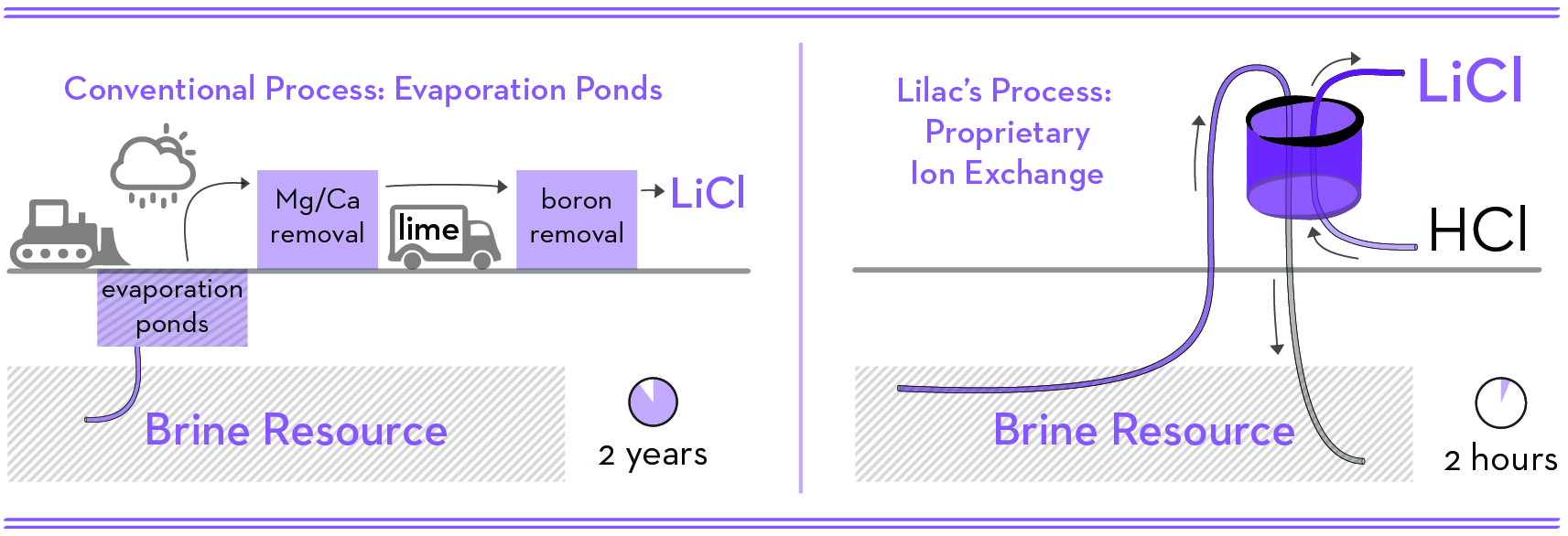
CTR’s engineering and project management partner HATCH has completed the project’s NI 43-101 Preliminary Economic Assessment and the Hell’s Kitchen development is fully permitted to commence delineation well drilling and pilot plant construction in Q2, 2020.
The company expects to deliver its first 17,350 tonnes of battery-grade lithium carbonate in 2023 and has the capacity to scale up to 34,700 tonnes LCE per annum in 2025 with operating costs per tonne anticipated to be within the first quartile industry cost range.
“We’re delighted to be working with Lilac to transform the lithium industry, and to create a thriving and secure minerals supply chain in the Unites States.” Rod concluded.
Source: Company release by email
